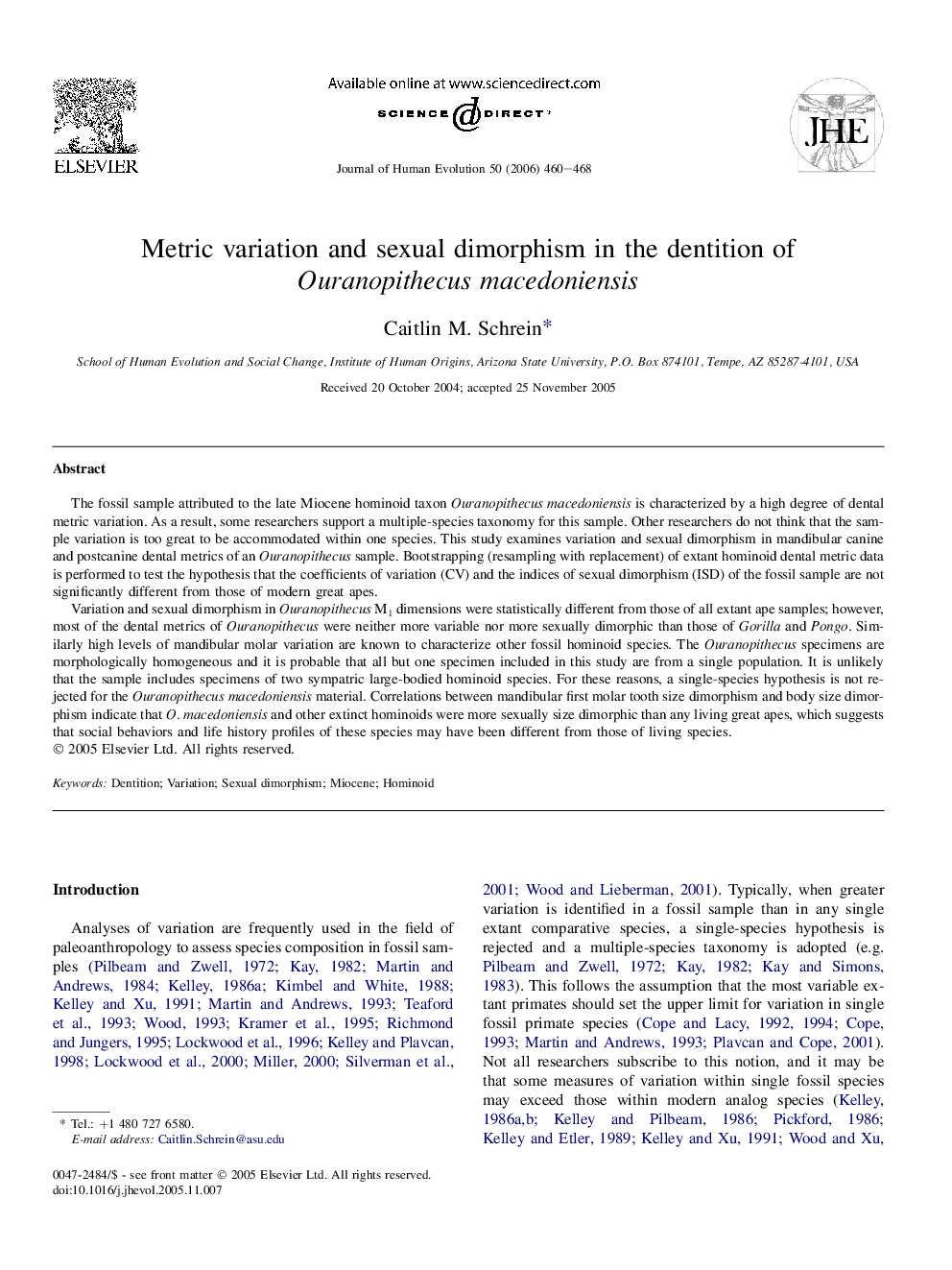| کد مقاله | کد نشریه | سال انتشار | مقاله انگلیسی | نسخه تمام متن |
|---|---|---|---|---|
| 4557389 | 1329553 | 2006 | 9 صفحه PDF | دانلود رایگان |

The fossil sample attributed to the late Miocene hominoid taxon Ouranopithecus macedoniensis is characterized by a high degree of dental metric variation. As a result, some researchers support a multiple-species taxonomy for this sample. Other researchers do not think that the sample variation is too great to be accommodated within one species. This study examines variation and sexual dimorphism in mandibular canine and postcanine dental metrics of an Ouranopithecus sample. Bootstrapping (resampling with replacement) of extant hominoid dental metric data is performed to test the hypothesis that the coefficients of variation (CV) and the indices of sexual dimorphism (ISD) of the fossil sample are not significantly different from those of modern great apes.Variation and sexual dimorphism in Ouranopithecus M1 dimensions were statistically different from those of all extant ape samples; however, most of the dental metrics of Ouranopithecus were neither more variable nor more sexually dimorphic than those of Gorilla and Pongo. Similarly high levels of mandibular molar variation are known to characterize other fossil hominoid species. The Ouranopithecus specimens are morphologically homogeneous and it is probable that all but one specimen included in this study are from a single population. It is unlikely that the sample includes specimens of two sympatric large-bodied hominoid species. For these reasons, a single-species hypothesis is not rejected for the Ouranopithecus macedoniensis material. Correlations between mandibular first molar tooth size dimorphism and body size dimorphism indicate that O. macedoniensis and other extinct hominoids were more sexually size dimorphic than any living great apes, which suggests that social behaviors and life history profiles of these species may have been different from those of living species.
Journal: Journal of Human Evolution - Volume 50, Issue 4, April 2006, Pages 460–468